Archive of the Mendocino Heritage Artists
Dorr Bothwell’s ORNAMENTAL Ceramics FOR GLADDING, MC BEAN
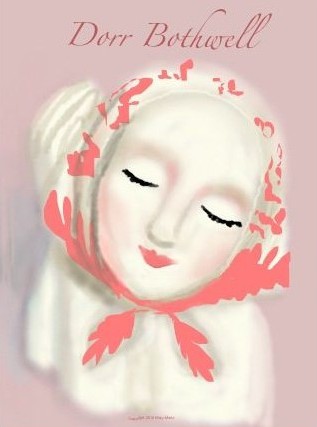
NOTE: In 2018 I was in correspondence with James Elliot-Bishop, who kindly repaired gaps and errors in previous information about Gladding, McBean, its Catalina division, and Dorr Bothwell’s ceramic designs. All of us who appreciate Dorr Bothwell’s unique ornamental ceramics owe him a debt of gratitude. – C.G. Blick, Archivist (November 2, 2019)
James F. Elliot-Bishop is the author of Franciscan, Catalina, and Other Gladding, McBean Wares: Ceramic Table and Art Wares 1873-1942 and Franciscan Hand-Decorated Embossed Dinnerware, both from Schiffer Publishing, Ltd.
In addition to his books, James Elliot-Bishop produced the Franciscan Newsletter from 1992 to 2000, and he maintains the Franciscan Ceramics Archive.
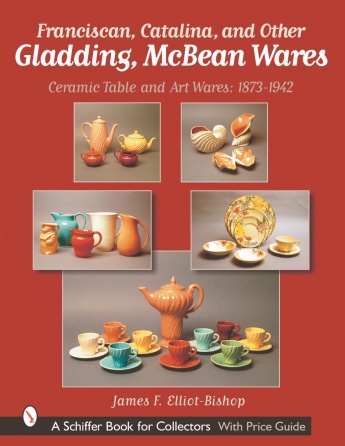
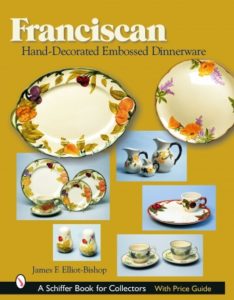
Dorr Bothwell & Gladding, McBean
From 1937 to 1938 or 1939, Dorr Bothwell designed small ornamental ceramics, working as an independent contractor for Gladding, McBean (GMB) in Los Angeles.
Between 1937 and 1940 (or perhaps 1941, or even 1942), Gladding, McBean produced Dorr Bothwell’s shapes (designs) in at least three of its lines: Terra Cotta Specialties, Catalina Art Ware, and a third line consisting of Dorr Bothwell’s Peasant Head (C-801) alone, in a glazed and hand painted version.
Gladding, McBean pioneered the use of Malinite terracotta
Fortunately many of Dorr Bothwell’s ornamental ceramics have survived, and are popular in resale markets like Ebay. While some of the images in our archive have been provided by collectors, online resale markets have been the source of most of the Bothwell ceramics images here.
All three lines were manufactured at Gladding, McBean’s new pottery at 2901 Los Feliz Boulevard in Los Angeles

“The former Tropico Pottery was located in the city of Los Angeles (the dividing line between Glendale and Los Angeles was the SP railroad tracks). GMcB had two plants in Los Angeles. When GMcB acquired the Tropico Pottery in 1923, the company referred to the former Tropico Pottery plant as the Glendale plant so as not to confuse the plant with their already existing LA plant. GMcB never had a plant in the city of Glendale. Unfortunately, calling the plant the Glendale plant only confused the plant’s actual location” – James Elliot-Bishop for the California Historical Society Collection at USC.
Catalina Pottery: Catalina Clay Products, a division of the Santa Catalina Island Company, produced brick, tile, tableware and decorative pottery on Santa Catalina Island, California, using clays and glazing minerals mined on the Island, providing much needed year-round employment for Island residents. In 1937, Gladding, McBean & Co. acquired all of the assets of the company, and the pottery on the Island was closed. All molds and equipment were moved to Gladding, McBean & Co.’s Glendale plant (Franciscan dinnerware division) in Los Angeles. Gladding, McBean continued to produce Catalina art ware and dinnerware shapes for their Catalina Pottery art ware lines until 1942. From: Catalina Pottery, Wikipedia
Most of the glaze colors mentioned here are from Gladding, McBean’s 1930s color palette.
The Peasant head vase was Gladding, McBean’s most popular. It was also GMB’s most pirated ornamental design, which is a tribute of sorts. When GMB ceased production of its ornamental lines, the Peasant Head mold was sold, along with other GMB ornamental ceramics molds, to Weil Ware of California, which produced it from 1952 to 1956. Afterward, Peasant Head molds were available for purchase by hobbyists.
Unlike many mass-produced small decorative ceramics from the 1930s, Dorr Bothwell’s ceramic figures and head vases are designed to be viewed in the round, and are interesting from every angle.
Gladding, McBean 1937 Style Sheet
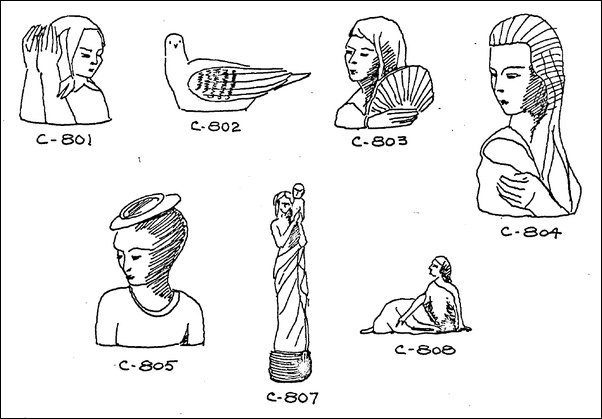
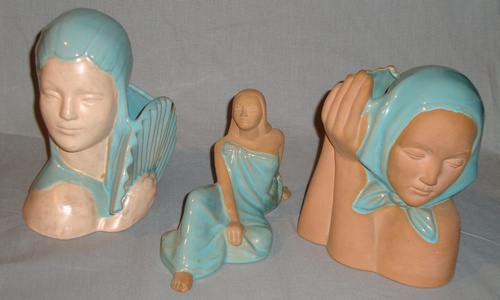
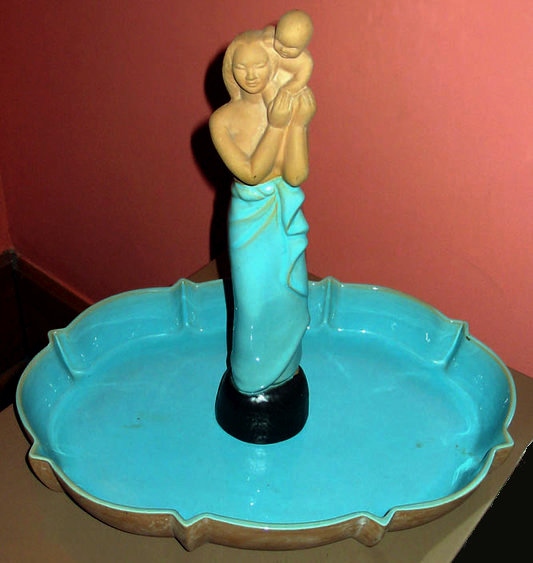
James Elliot-Bishop writes (2018): “Dorr Bothwell’s designs for Gladding, McBean & Co. were made from 1937-1940 in the Terra Cotta Specialties line. The Terra Cotta line are those items which featured the special stained malinite body (the reddish brown terra cotta) with glazed highlights… Bothwell’s designs were also in the Catalina Art Ware line made from 1937-1941. Items in the Catalina line were glazed with solid colors. All items in both lines were consistently glazed and/or decorated. There are some variations found; these are experimental pieces or one offs made by employees.”
Peasant Head (GMB C-801)
Gladding, McBean’s head vase Peasant Head (designed in 1937) is, without question, Dorr Bothwell’s most popular ceramic shape. Dimensions: height – 6 3/4″, depth – 4″, base length – 5 1/2″).
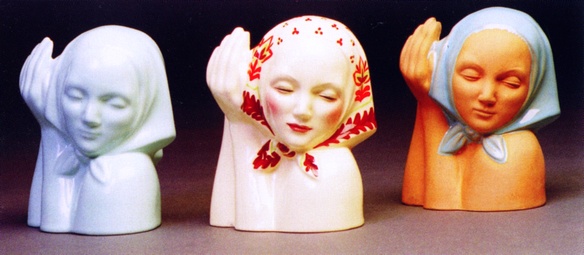
In addition to authorized versions, pirates (other companies and some individuals) made Peasant Head molds from Gladding McBean originals, and produced their own versions. Some detail is lost in making a pirate mold from an original, but not much, and the design remains compelling.
James Elliot-Bishop writes: “The Peasant Head vase was also copied by Hull potteries which is why Gladding, McBean patented the vase in 1939. You will find the Gladding, McBean-produced Peasant Vase with a sticker or being impressed in the clay as being ‘Patented.'”
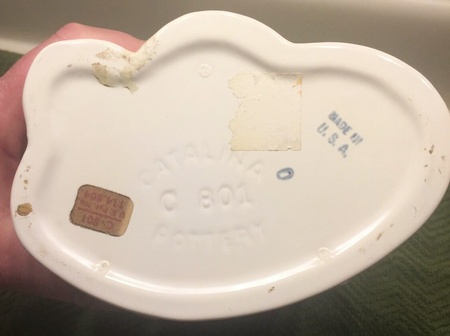
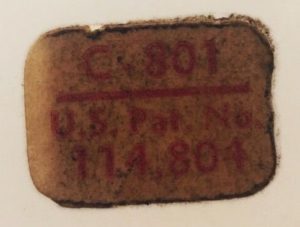
Dorr Bothwell sculpted the prototypes of her Catalina/ Gladding, McBean head vases and figures, but once her designs were in production, whether by Gladding McBean artisans, or by later companies, or by individual hobbyists, others glazed or painted them, giving rise to a highly individual range of embellishments, often charming, like the Peasant Head Vase below (C-801), an earnest attempt, perhaps a child’s, to copy a classic Gladding McBean design.
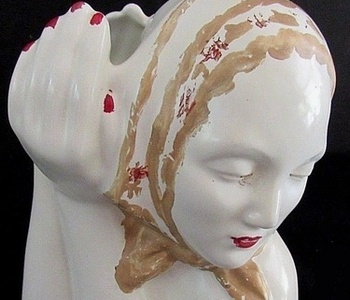
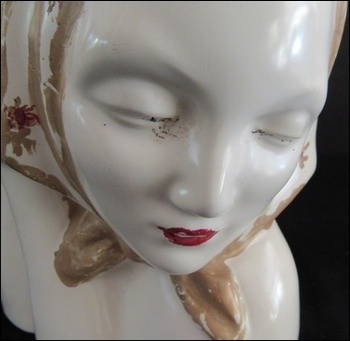
Without specific information, the creators of the many imaginative variants are lost to time, and dates here will be approximate, because even today, fans of the Peasant Head continue their inspired embellishments.
Terra Cotta Specialties Peasant Head (C-801)
The Peasant head vase, shape C-801 in partially glazed Malinite terracotta, was designed in 1937 by Dorr Bothwell for the Catalina Division of Gladding McBean in Los Angeles.
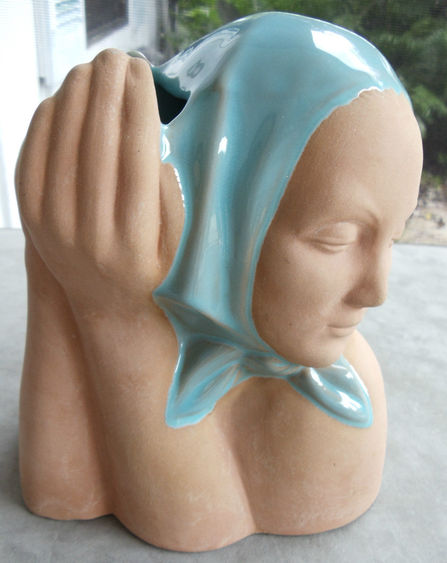
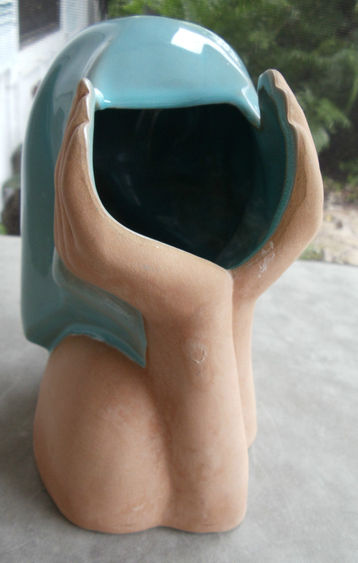
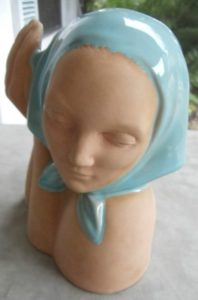
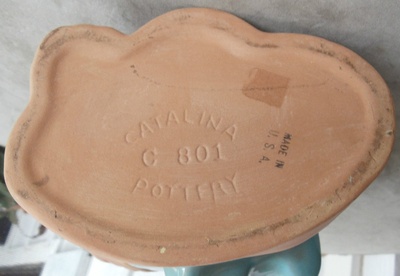
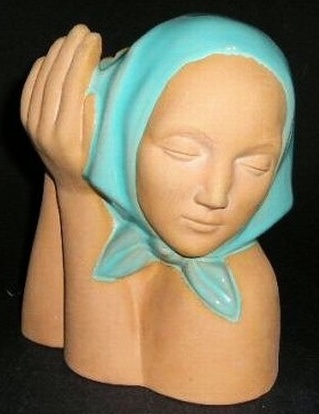
Catalina Art Ware: Solid GLAZE Peasant Head VASE (C-801)
The Peasant Woman solid color glazed Malinite terracotta head vase was designed in 1937 by Dorr Bothwell for Gladding, McBean’s Catalina Art Ware line.
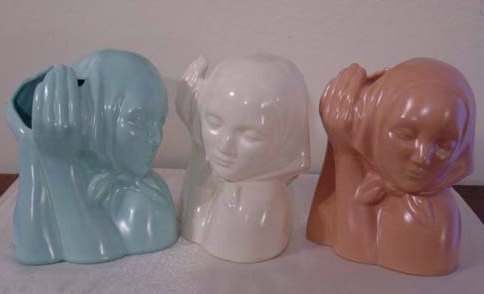
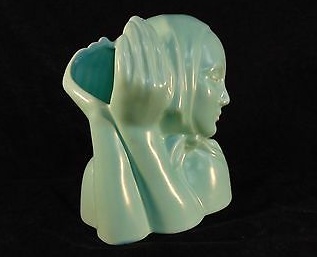
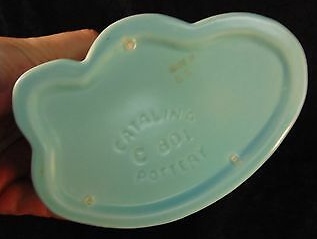
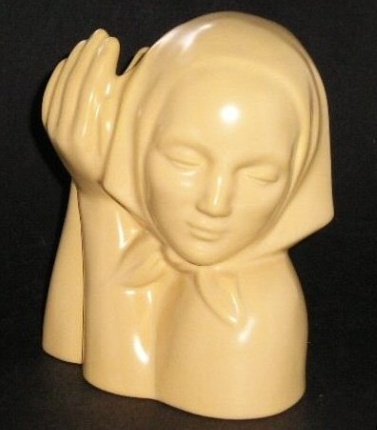
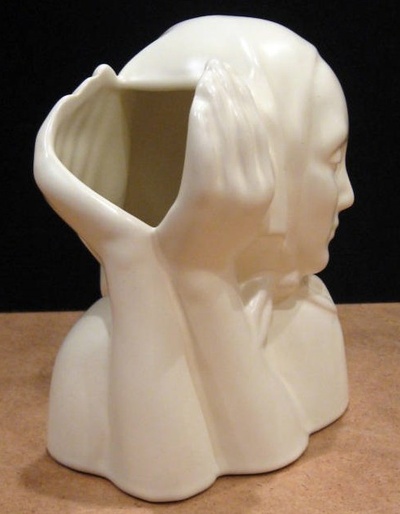
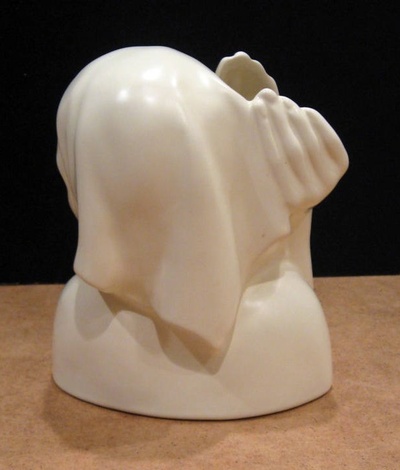
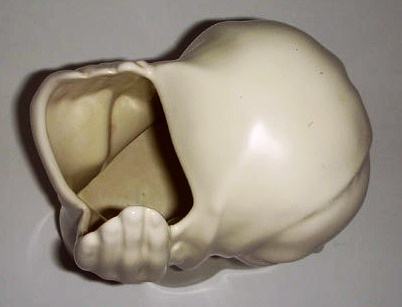
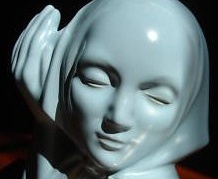
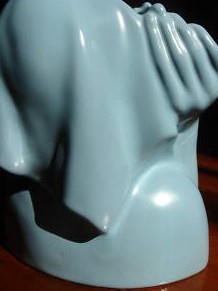
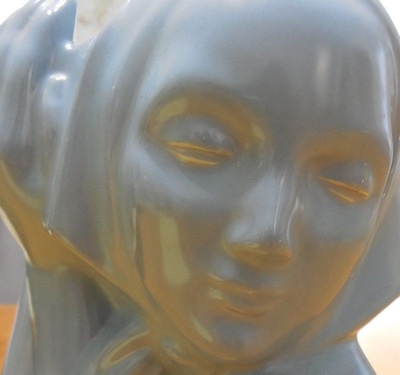
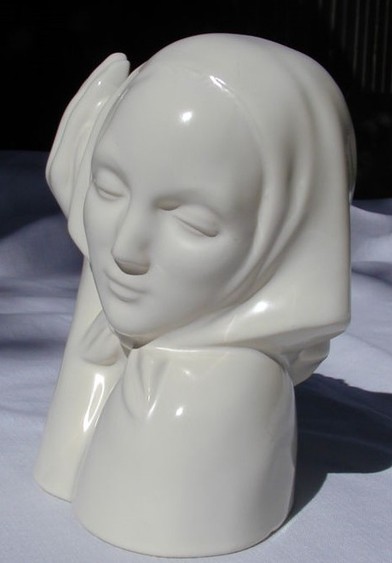
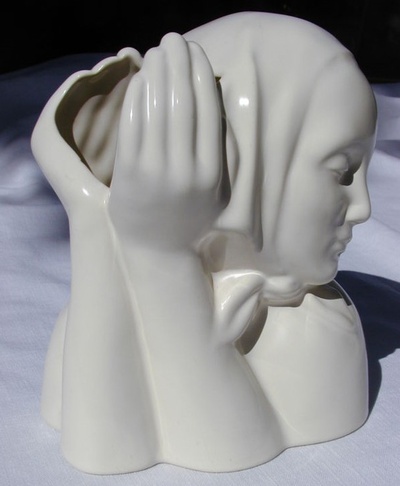
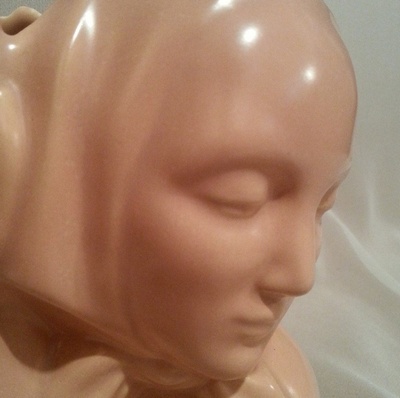
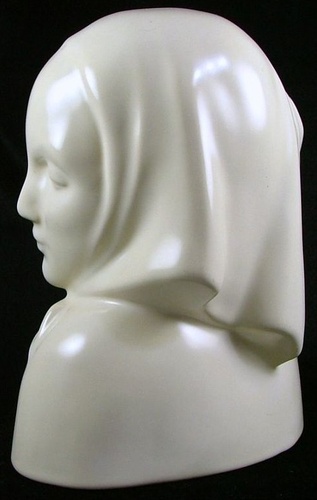
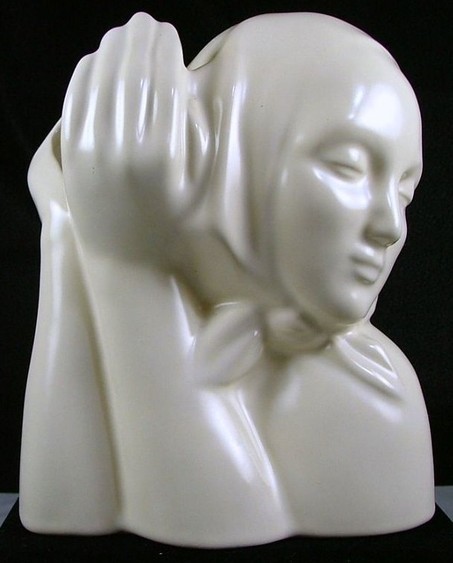
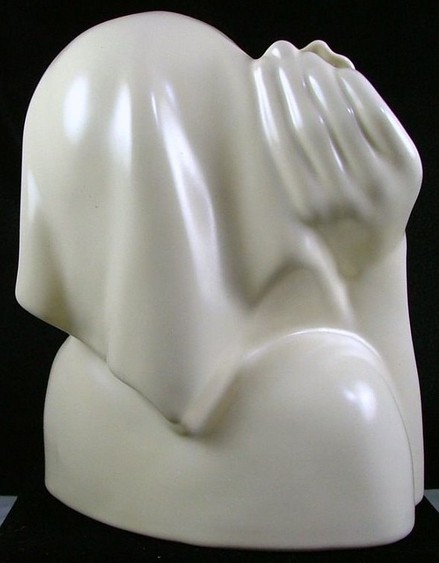
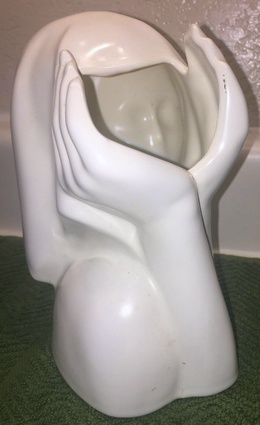
Special Series: Glazed and Handpainted Peasant Head (C-801)
“[In addition to the Peasant Head in GMB’s Terra Cotta Specialties and Catalina Art Ware lines] Peasant Head vase was also made in a hand-painted version by Gladding, McBean for a shorter time period between 1937-41. This head vase came in only a limited number of painted versions and always are marked ‘Catalina Pottery.'” – James Elliot-Bishop (2018)
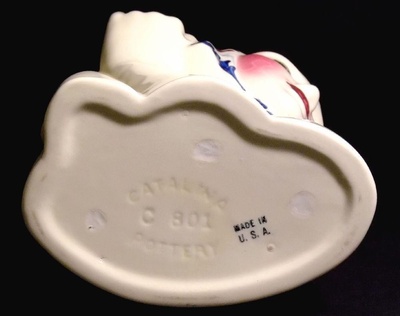
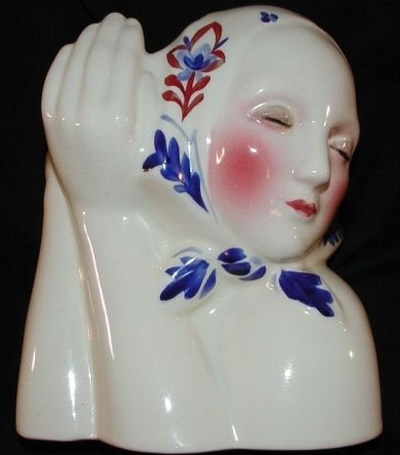
Here are some others:
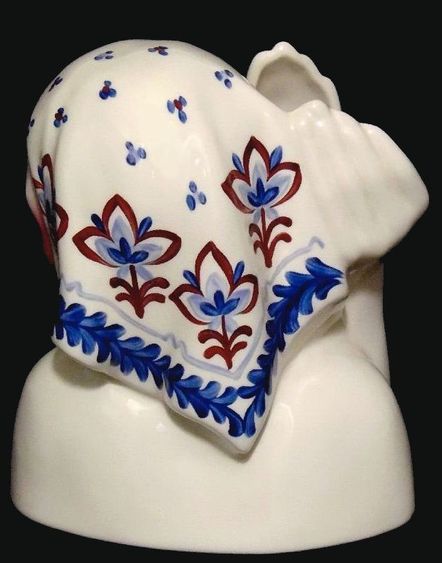
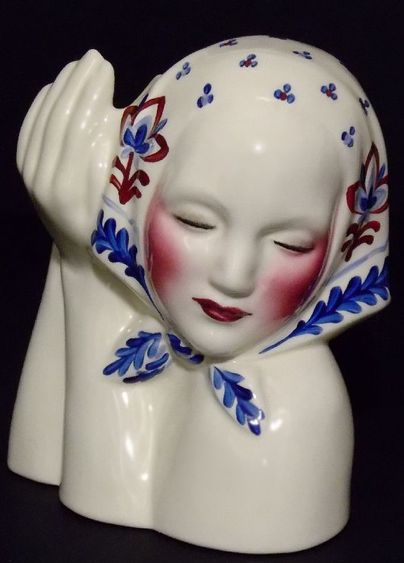
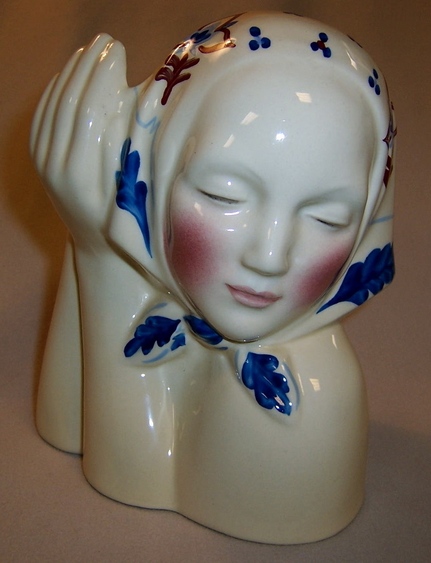
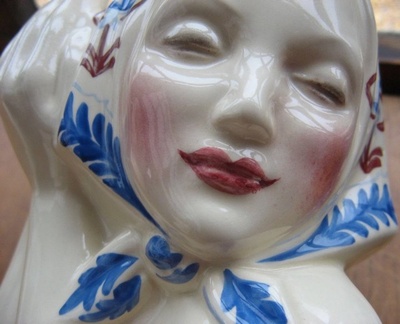
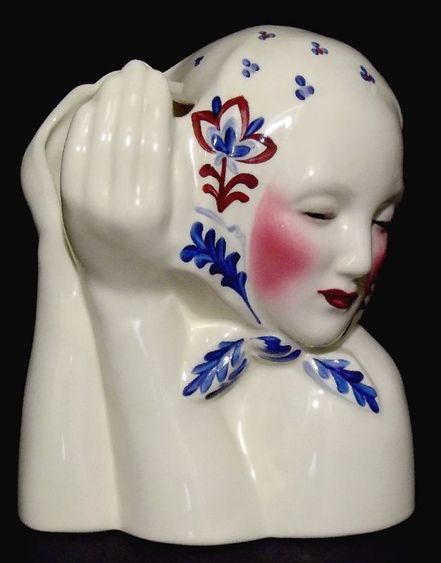
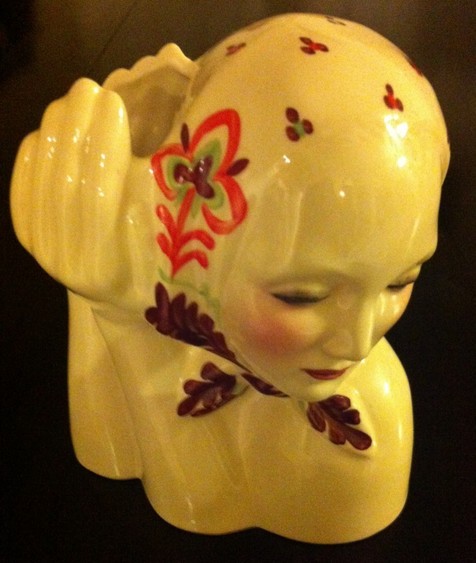
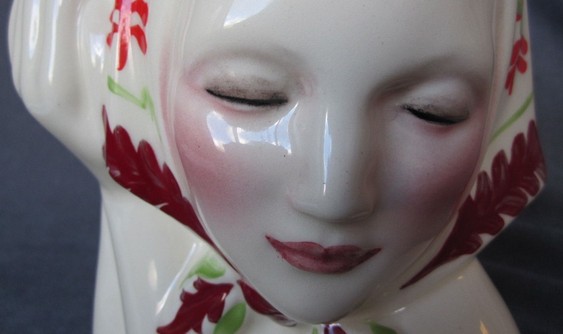
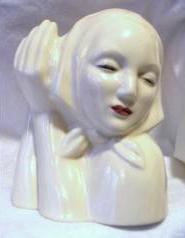
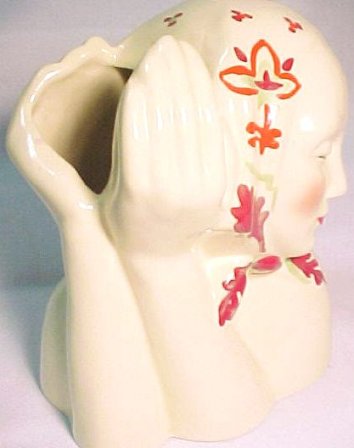
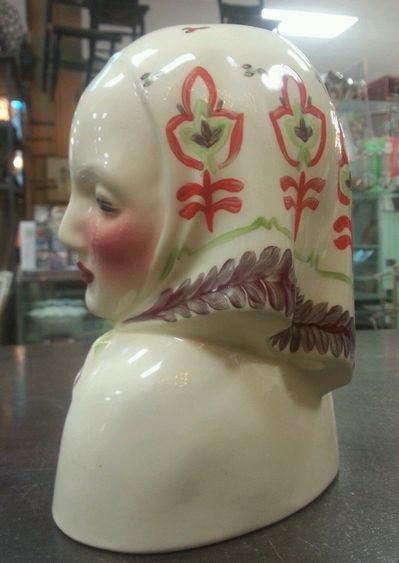
Peasant Woman, glazed terracotta head vase designed by Dorr Bothwell for the Catalina Division of Gladding McBean in Los Angeles (c. 1937).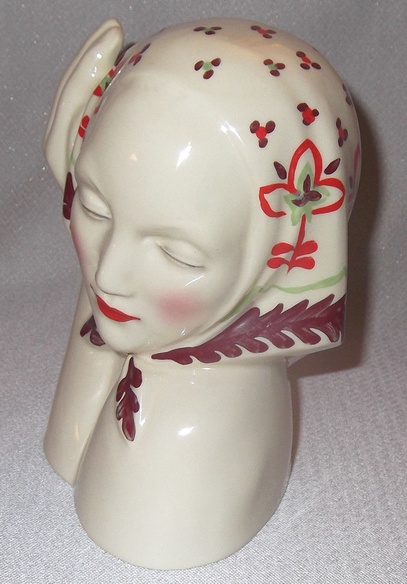
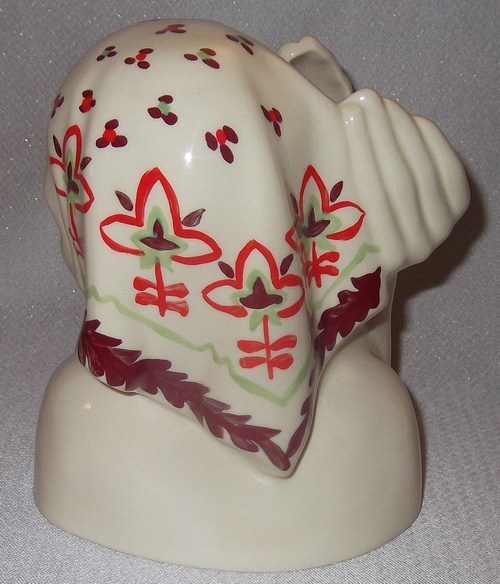
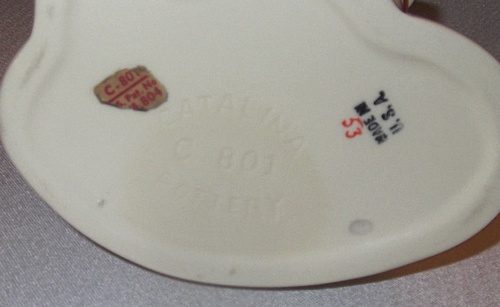
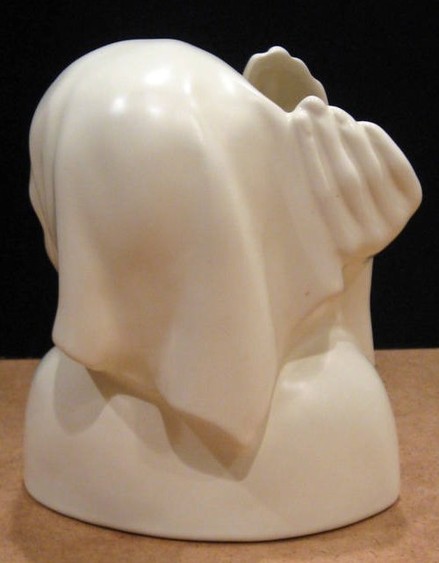
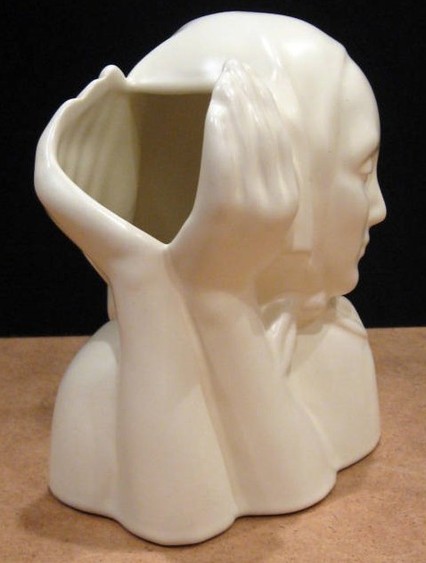
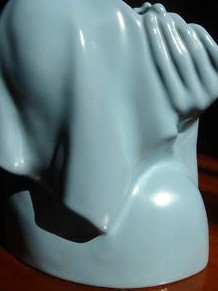
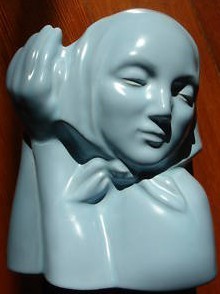
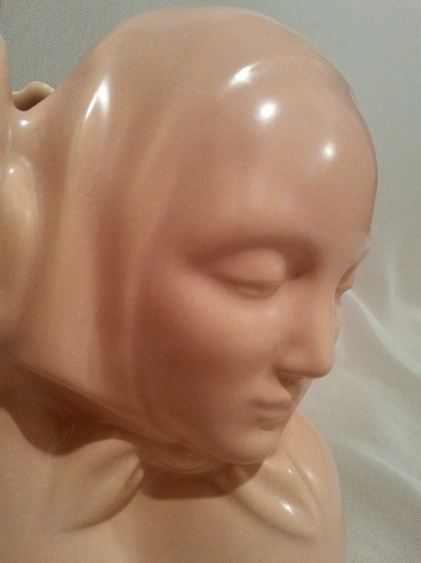
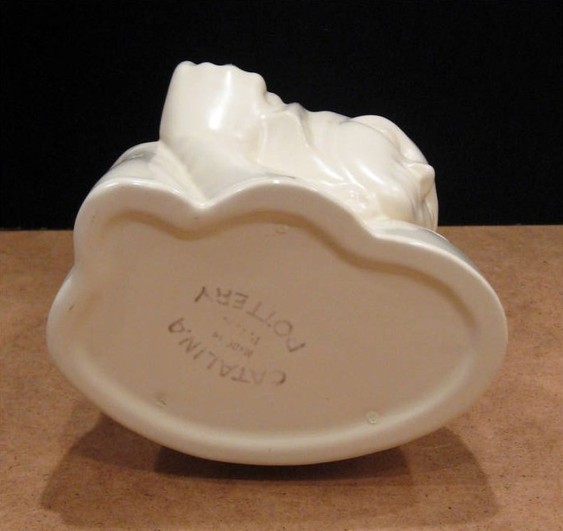
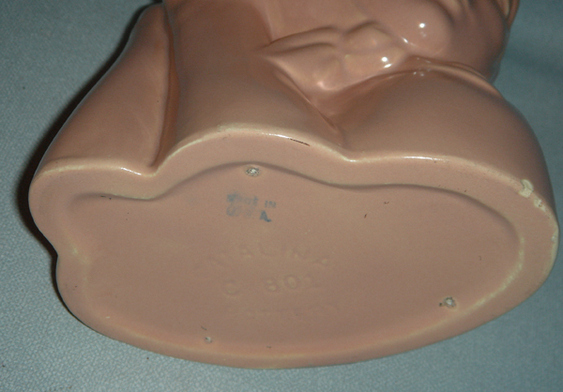
Frederic & Mary Grant and Weil Ware
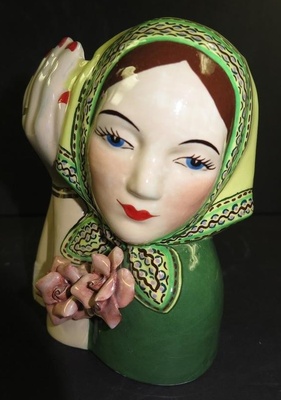
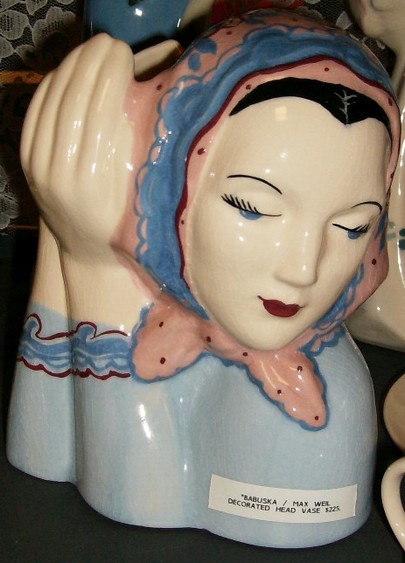
James Elliot-Bishop continues: “Frederic Grant was the plant manager for Gladding, McBean from 1934-1953. Mary Grant was his wife and designed for Gladding, McBean from 1934-1953.
After 1953, they purchased Weil Ware of California and purchased many of the molds used by Gladding, McBean from their Catalina Art Ware line. Gladding, McBean ceased making art ware in 1942.
“Weil Ware of California acquired the mold for the Peasant Head vase, and produced it in various hand-painted versions from 1954-56.
“After Weil Ware closed, many of the molds were bought by hobbyists. This is a reason you will find the Peasant Head vase unmarked, in different clay bodies & in off versions [made] from Gladding, McBean or Weil Ware produced ware.” – James F. Elliot-Bishop, in an email to Mendocino Heritage Artists’ Archivist, C.G. Blick (August 16, 2018)
Dove Vase (GMB C-802)
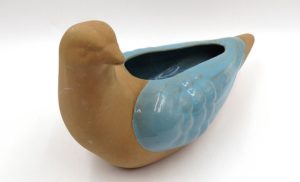
Delph Blue glaze
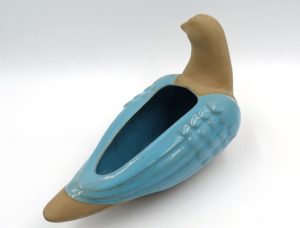
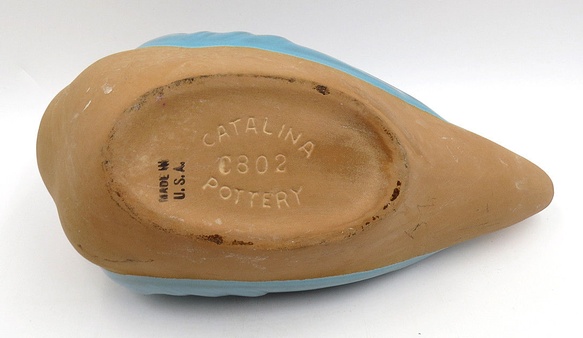
Above, three views of Dorr Bothwell’s Dove Vase.
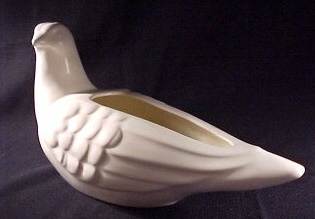
White glaze
Woman with Fan (GMB C-803)
The head vase Woman with Fan (GMB C803) was designed by Dorr Bothwell (1937) for the Catalina Division of Gladding McBean in Los Angeles.
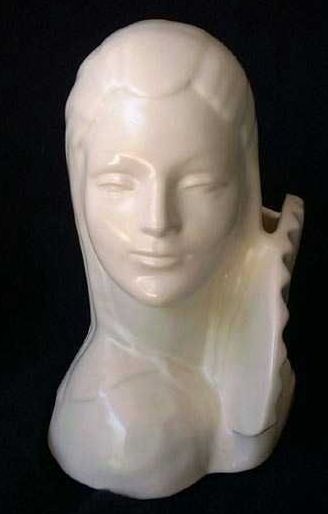
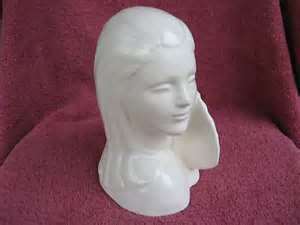
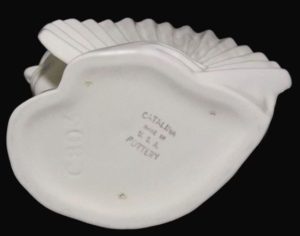
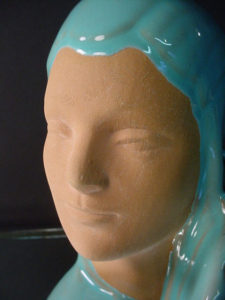
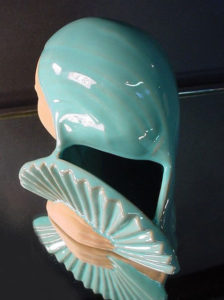
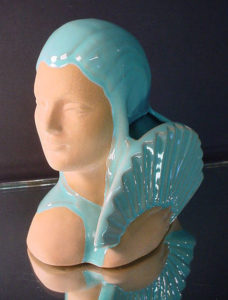
Aqua glaze
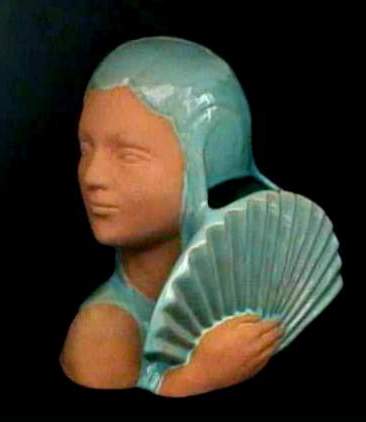
Jade Green






Aqua glaze

Jade Green
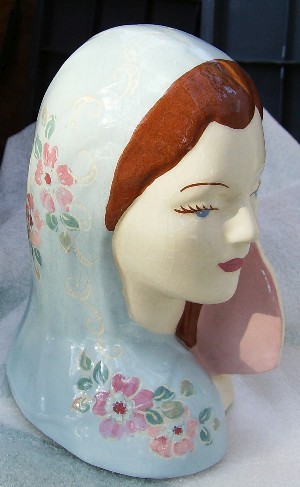
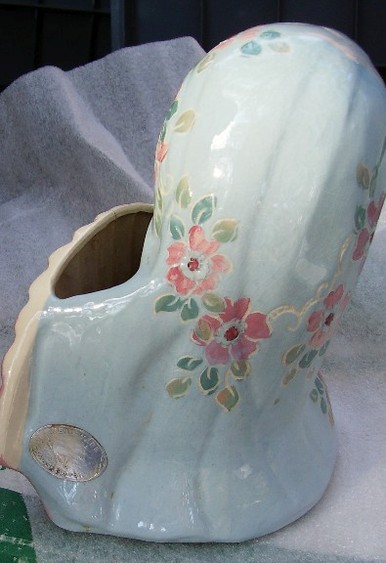
Samoan Woman (GMB C-804)
Aptly called heroic, for its aspect as much as its size, at 13 inches high, Samoan Woman (GMB C804) is the largest of several head vases designed by Dorr Bothwell (1937) for the Catalina Division of Gladding McBean.
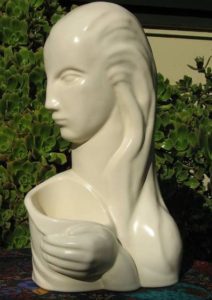
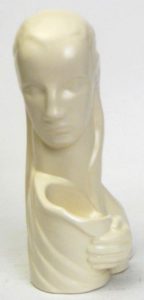
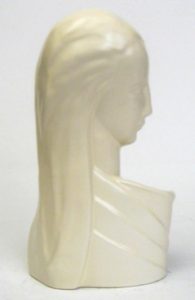
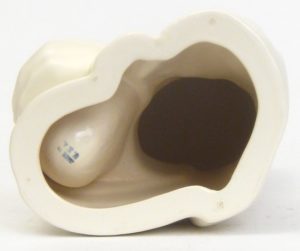
Ivory glaze
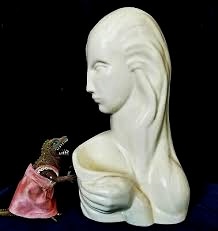
White glaze
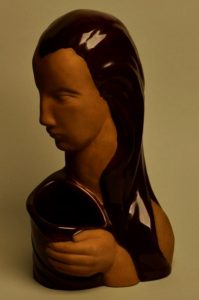
Dubonnet glaze
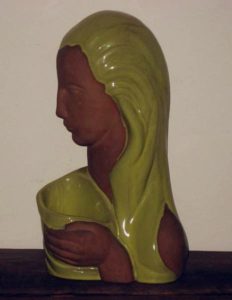
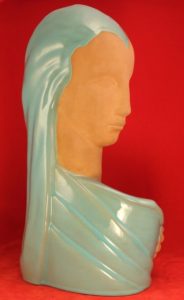
Jade Green glaze
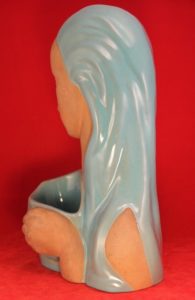
Delph Blue glaze
Samoan Mother and Child (GMB C-807)
Samoan Mother and Child, shape number C807, was designed by Dorr Bothwell (1937) for the Catalina Division of Gladding McBean where it remained in production from 1937 to 1941.
Catalina Art Ware Samoan Mother and Child (C807)
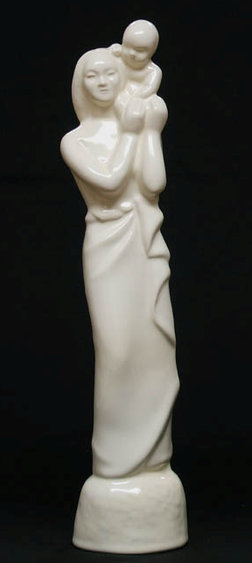
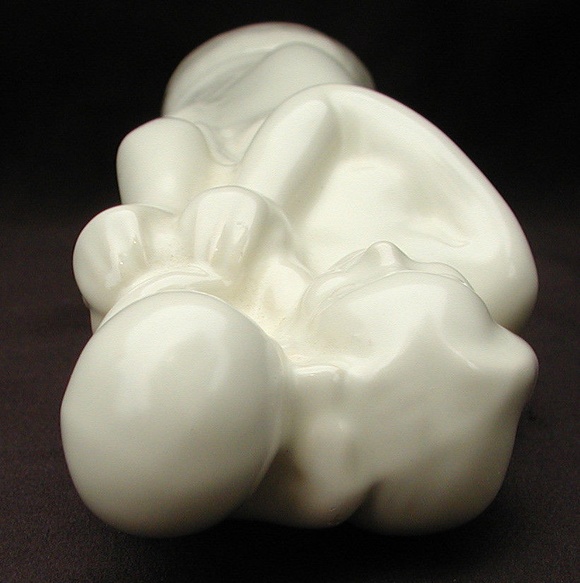
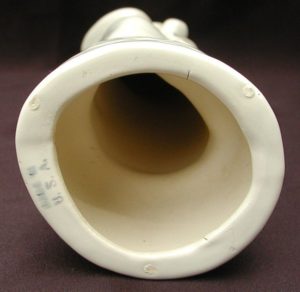
Above, three views of Dorr Bothwell’s Samoan Mother and Child (GMB C807), from Gladding, McBean’s Catalina Art Ware line (1937-1941). Ivory glaze.
Terra Cotta Specialties (Terracotta Expressions) Samoan Mother and Child
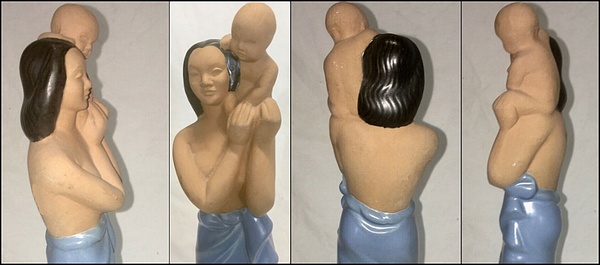
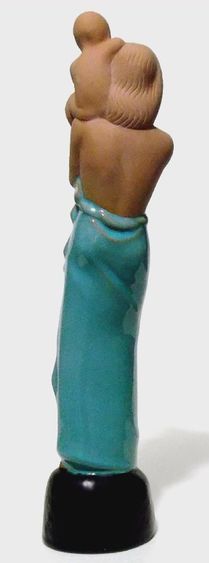
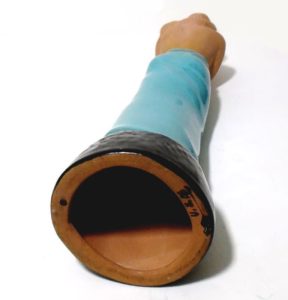
Turquoise glaze
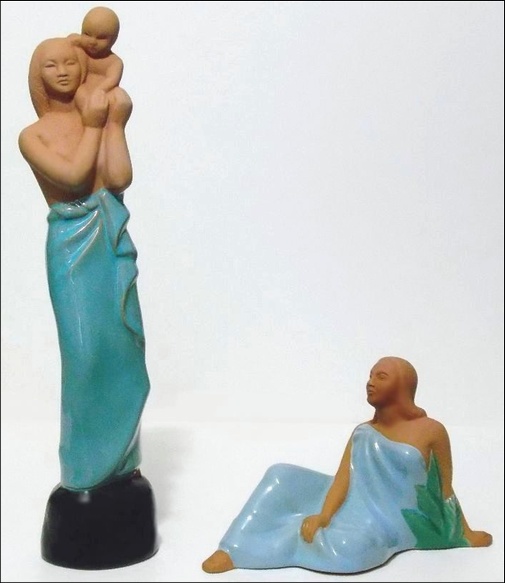
Turquoise glaze and Delph Blue
Reclining Samoan Woman (GMB C-808)
The 5″ x 8″ ornamental ceramic figure Reclining Samoan Woman was designed by Dorr Bothwell in 1937, and produced by Gladding, McBean, from 1937 to 1941, in two separate lines, Terra Cotta Specialties (terracotta tinted Malinite with colored partial glazes), and Catalina Art Ware (solid color glazes).
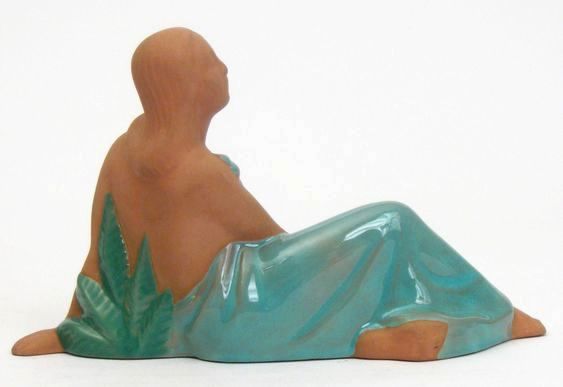
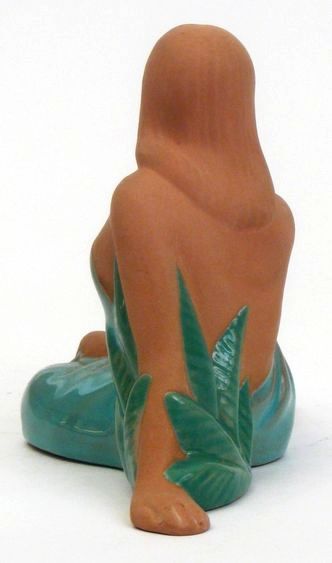
In Gladding, McBean’s Catalina Art Ware line, the Reclining Samoan Woman reappears with a large blossom in her hair.
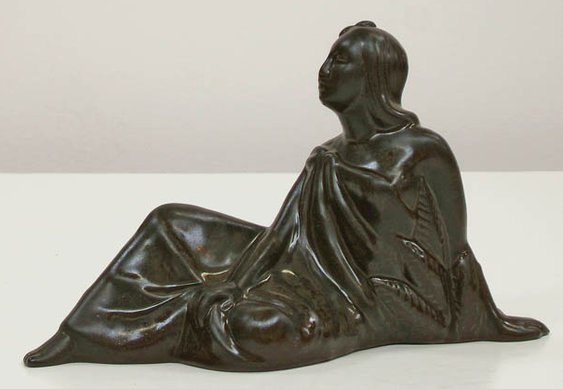
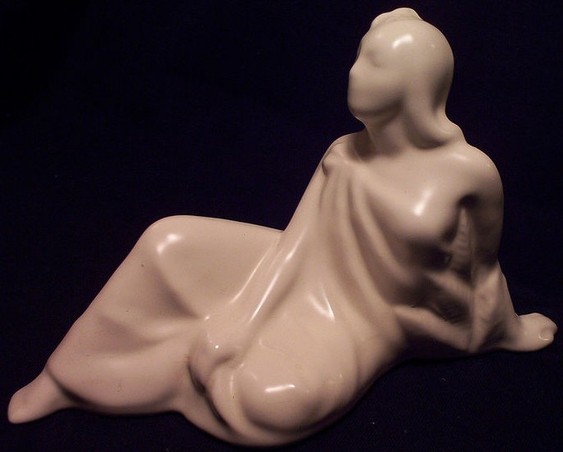
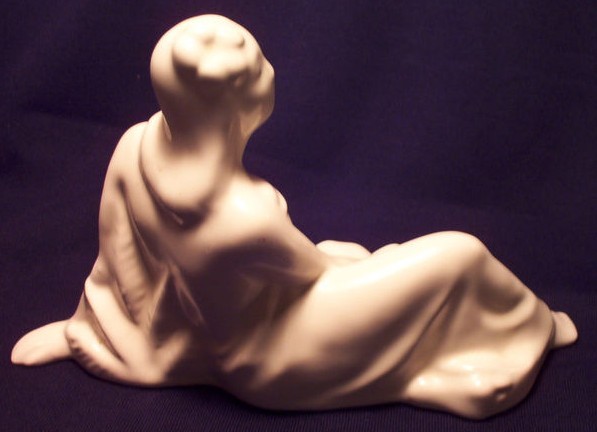
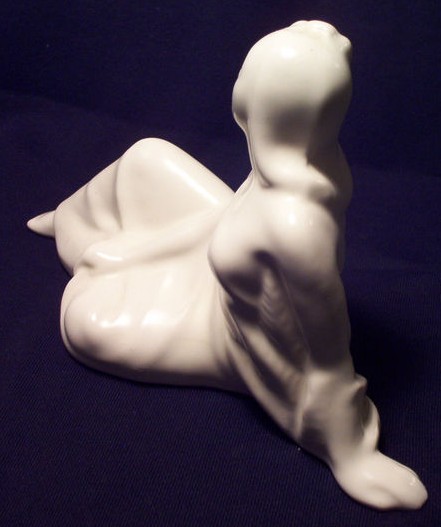
Woman with Turban (GMB C-809)
Woman with Turban
The Woman with Turban head vase was designed by Dorr Bothwell (c. 1937), and produced in Gladding, McBean’s Terra Cotta Specialties and Catalina Art Ware lines, between 1937 and 1941. Dimensions: height 9 1/4″, width 6 3/4″, depth 7 1/4″.
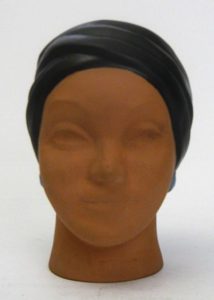
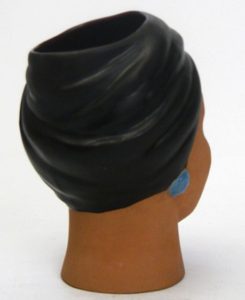
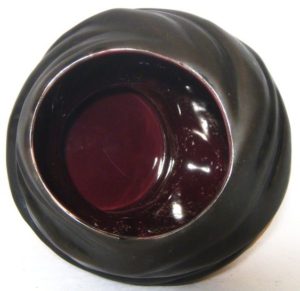
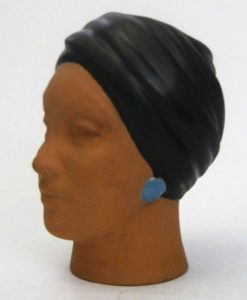
Above, four views of Dorr Bothwell’s Woman with Turban head vase (1940) from GMB’s Terra Cotta Specialties line. The body of the piece is terracotta stained Malinite; the turban glaze is a satin Black, the interior of the vase is glazed in gloss Burgundy or Dubonnet, and the earrings’ glaze is a gloss medium blue, either Mexican Blue, or Glacial Blue Turquoise, a color not listed on the GMB 1930s color sheet.
WOMAN WITH BROAD BRIMMED HAT
(Royal Arden Hickman)
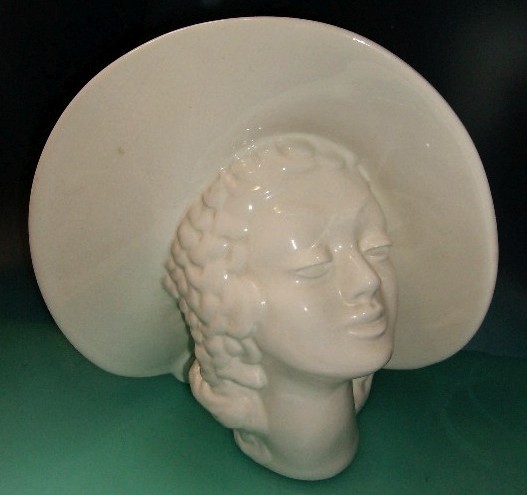
Once attributed to Dorr Bothwell, the ceramic head vase pictured here, Woman with Broad Brimmed Hat, is the work of designer Royal Arden Hickman, mass produced by Haeger Potteries in Illinois, where Hickman was chief designer from 1938 to 1944. According to Wikipedia, his Haeger products were marked “Royal Haeger by Royal Hickman U.S.A.”
The model for the Haeger Woman with Broad Brimmed Hat was Hickman’s beautiful wife, Ruth.
Ruth Hickman was also the model for other of the artist’s designs, including limited editions created in the 1930s for Garden City Pottery Company in San Jose, California.
Many thanks to Royal Arden Hickman biographer Nyles Gregory for providing the identities of the artist and his model, as well as details of the artist’s career, and for sharing his photographs of some of Hickman’s work.
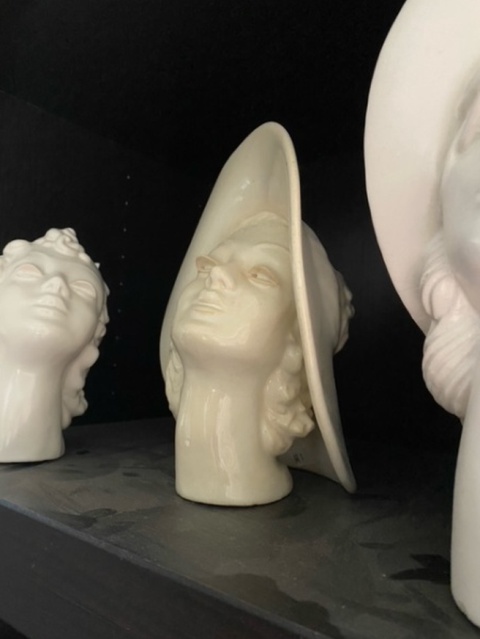
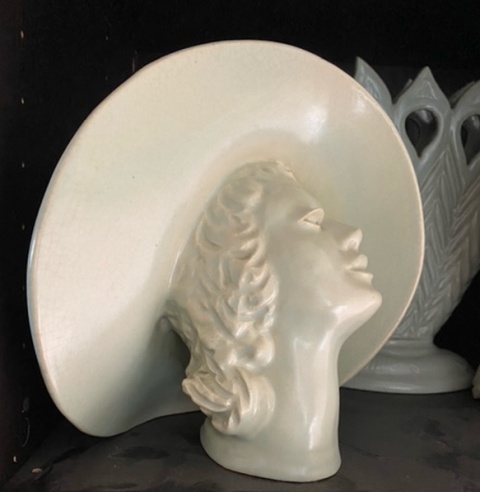
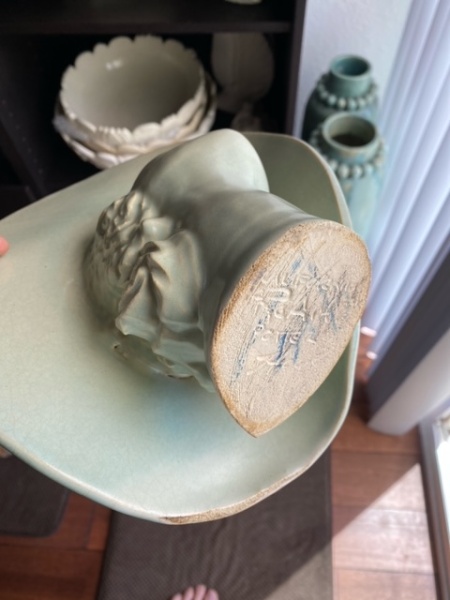
Jean Lawyer’s Woman with Round Hat (GMB C-805)
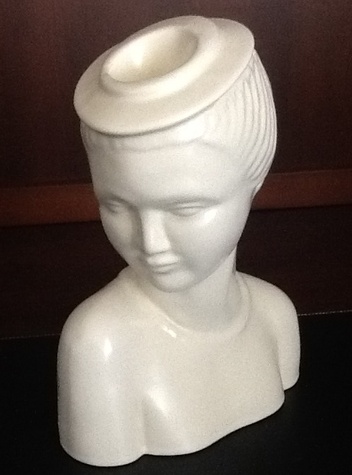
Woman with Round Hat head vase shape (GMB C-805), formerly attributed to Dorr Bothwell, was designed by Jean Lawyer in 1937, for Gladding McBean’s Catalina Division, and produced at the Glendale plant, Los Angeles County, California. The shape was in production at GMB, in both the Terra Cotta Specialties and Catalina Art Ware lines, from 1937 to 1942.
Like the Peasant Head (GMB C801), Woman with Round Hat (GMB C805) was patented in 1939, but by Jean Lawyer, its designer, rather than by Gladding, McBean.
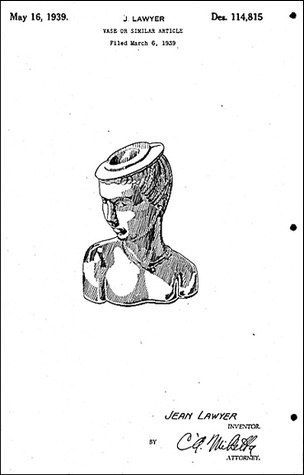
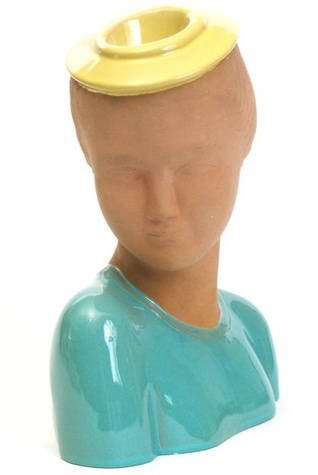
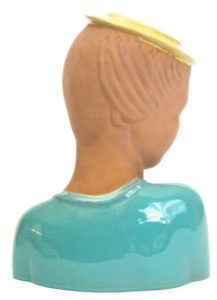
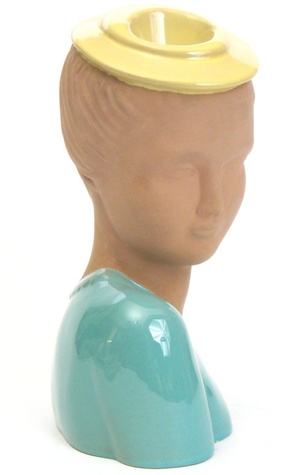
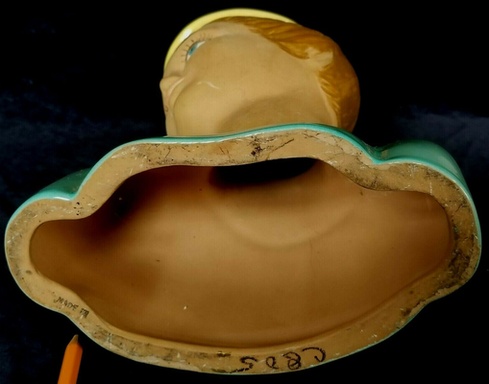
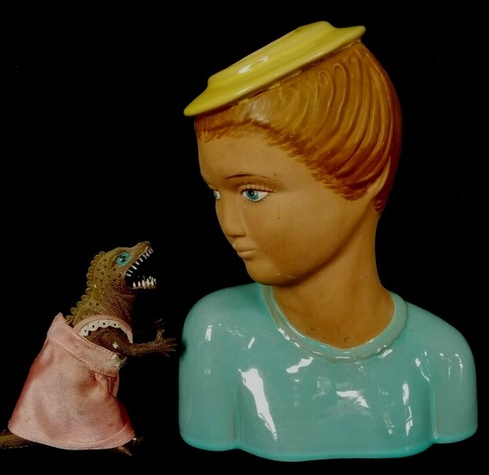
Woman with Collar (GMB)
While the Woman with Collar (also called Bust of Lady) head vase shape does not appear on Gladding, McBean’s first style sheet (1937), and its shape number is not known, it was produced sometime between 1938 and 1940 in GMB’s Terra Cotta Specialties and Catalina Art Ware lines
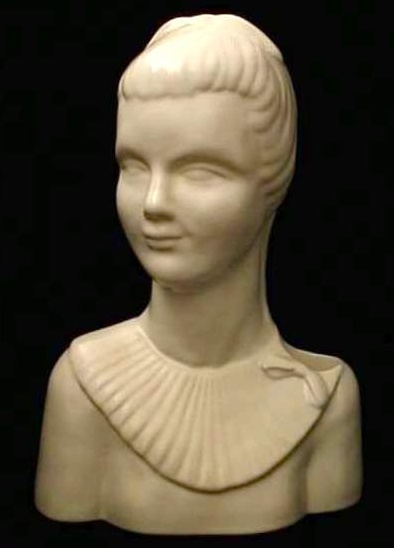
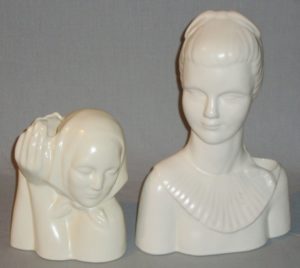
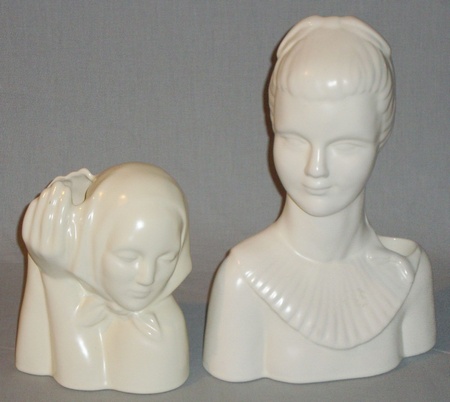
The design of Woman with Collar has been attributed to Dorr Bothwell, but it shares more similarities with Jean Lawyer’s Woman with Round Hat, than to any of Bothwell’s documented designs for Gladding, McBean.
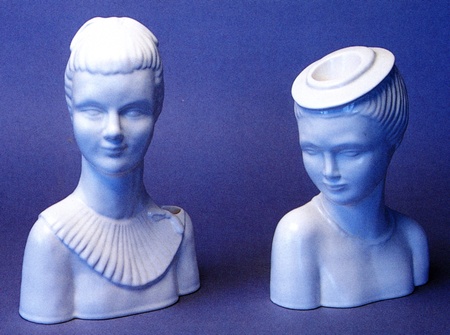
Compare Woman with Collar with Jean Lawyer’s Woman with Round Hat, especially the sensitive modeling of the brow in both pieces, the muscles above the eyes, visible through the skin, so different from the smooth, rounded foreheads of Dorr Bothwell’s women. Consider the short upper lip on each, the almost identical static set of the shoulders, and a similar treatment of the bosom in these two figures. Also, except for the Woman with Turban, and Woman with Broad Brimmed Hat (if it is a Bothwell), both of which are heads, rather than busts or figures, Bothwell delights in woman with hands.
More photos, including photos of bases, might aid in learning the production history of this charming piece.
The Conch Shell
Gladding McBean ceramic designs attributed to Dorr Bothwell include this conch shell, with Ivory glazed exterior, and Coral glazed interior.
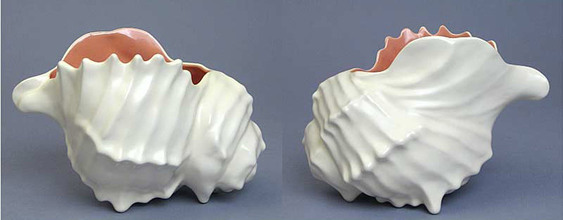
A conch shell appears again the following year, in Bothwell’s painting, The Birth of Venus, exhibited (1939 and 1940) in the Golden Gate International Exposition, held on San Francisco’s Treasure Island.
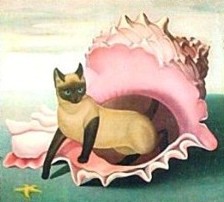
The conch shell’s use as a musical instrument is part of Fa’a Samoa, the Samoan Way, including on Ta’ū, American Samoa, where Bothwell lived ten years earlier.

After her time in Samoa, for the rest of her life, Dorr Bothwell’s love and respect for the Samoan people and their aesthetics found expression in her art, and Samoan women are the subjects of some of Bothwell’s work for the Catalina division of Gladding McBean.
A post-World War II edition of Woman with Broad Brimmed Hat was made in Japan for export.
The beautiful head, with its soft features, distinctive hairstyle, and elegant hat, appears to be that of an American woman of color. The uniform light cream glaze would have allowed the head vase a wider market in the United States, which remained heavily segregated into the 1960s.